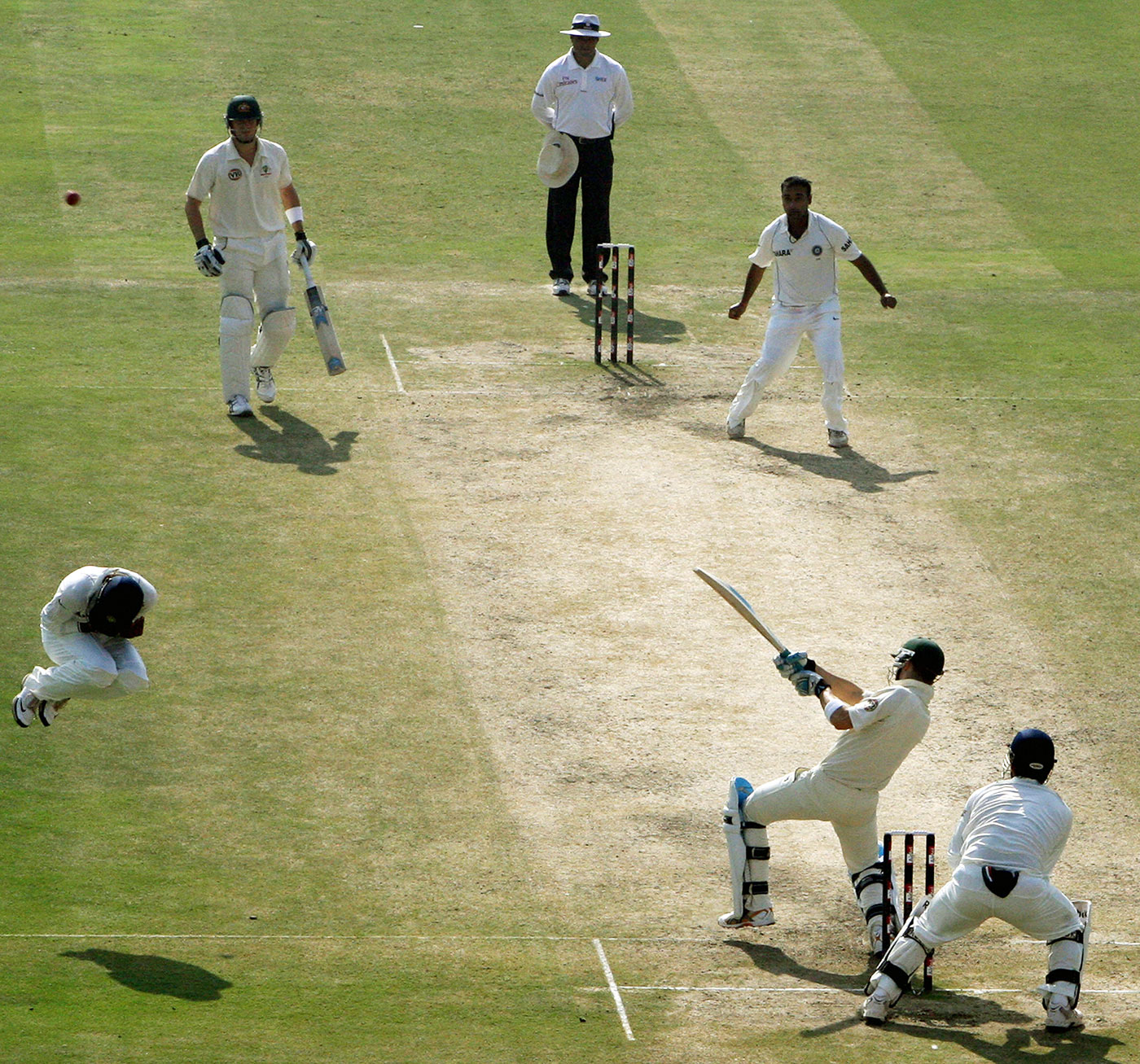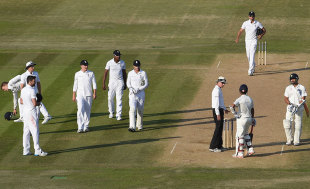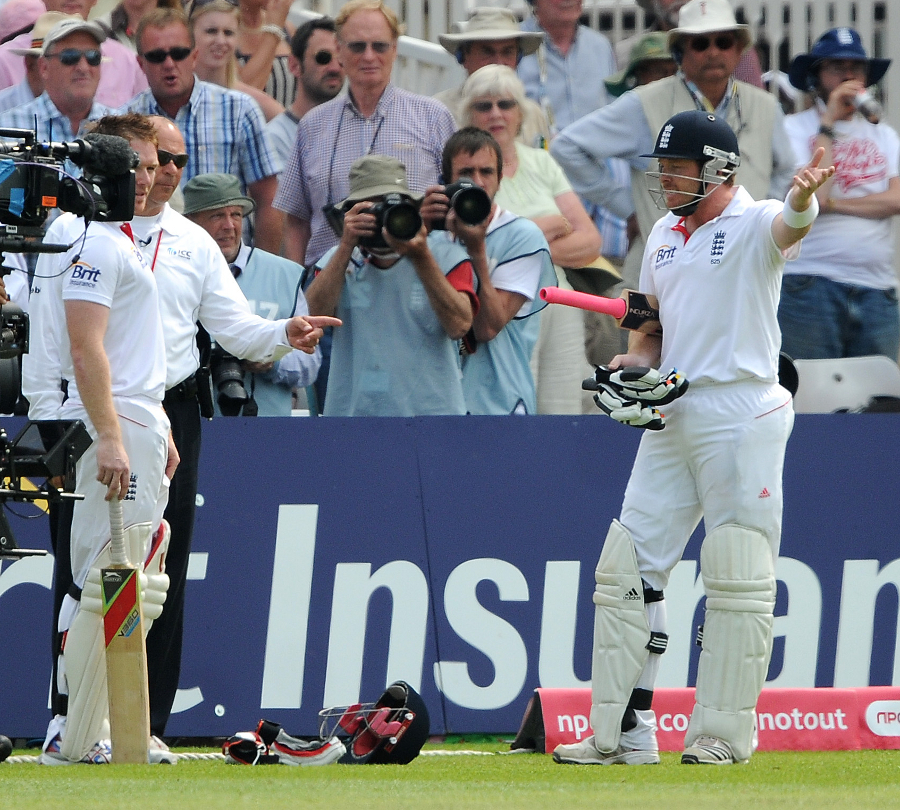Don't mean to be intemperate or rude or politically incorrect, but why is it that whenever there is an epic-proportion bust-up in international cricket, Australians are almost always involved?
Let's not think Dennis Lillee-Javed Miandad 1981. A rough 21st century brawl-recall will do.
Going backwards from the 2018 Warner-De Kock stairwell skirmish, you meet Josh Hazlewood giving umpire Ranmore Martinesz and New Zealand batsman Corey Anderson a mouthful in Christchurch, 2016.
In 2015, there's Warner and Rohit Sharma having a verbal stoush over an overthrow in a tri-series.
In 2014, Mitchell Starc and Kieron Pollard are involved in a ghastly altercation during the IPL.
In 2013, Warner and South African keeper Thami Tsolekile are ticked off over an incident in an A Test in Pretoria.
Only a few months later, Australian captain Michael Clarke is heard telling James Anderson on air, "Get ready for a broken f**** arm."
In 2010, Mitchell Johnson gets stuck into Scott Styris during an ODI in Napier.
The 2017 Ashes was marked by umpire Aleem Dar standing between James Anderson and Steven Smith in Adelaide, if only to stop the first punch from landing. There were debates over whether stump mikes should be turned down to prevent exchanges between adult men reaching the ears of children. We are not referring to the haw-haw "not even the best cricketer in your family, mate" banter, which has many genuine moments of mirth and forms part of the game's folklore. These are cricket's dramas on the other side of ugly, imprinted into the brains of kids as "normal" on-field behaviour, and last for weeks, full of whisper campaigns, leakages, ICC hearings and sentences.
Bored yet? Annoyed even? Then don't bother going back to Lehmann v Sri Lanka 2002, or McGrath v Sarwan 2003. Yes, let's set aside the Warner v Root walkabout, Harbhajan v Symonds, and even Virat Kohli's last two episodes: the 2014-15 send-offs, and the dramatics over Smith's 2017 "brain fade".
----- Also read
Smith and Lehmann culpable in Warner incident - Ian Chappell
-----
Stand back from the institutional defence that "David Warner has not been pulled up for any ICC code violation for the last three years and the demerits points scorecard reads South Africa six, Australia two." No need to go into a stats breakdown of how many times out of ten Australian cricketers get involved in cricketing boilovers or reducing to the "the other guys started it" argument. What cricket must deal with is the fact that the Australian cricket team may have turned what used to be spontaneous sporting combustion into their version of Tactic 2.0. Pre-meditated toxic confrontation, a drama scripted between balls.
Other countries manage to play tense, competitive cricket without lapsing into uber-nastiness. Those contests have their heated moments (James Anderson and Ravindra Jadeja, go stand in the corner), but they are not the template for every series between the sides. The cricket still dominates public memory, not the arguments and the controversy. Put Australia on one side of the contest and it's not quite the same.
Throughout its colourful and rich history, Australian cricket has offered us some of the game's most magnificent qualities: competitiveness, daring, energy, positivity. For the better part of the last two decades, they were the gold standard for the game. Yet, slowly, during the same period, so many major series featuring the Aussies has begun to produce an overheated, eventually absurd subplot. In which they usually claim to be the victims, while often being deliberate, and even skillful agent provocateurs.
Unseemly and juvenile conduct is then gift-wrapped into convenient catchphrases: "playing hard but fair" and "not crossing the Line". And what a shapeshifter of a Line it is: imaginary, planted into quicksand, travelling where and when it suits those who claim to own it. To be fair, every cricket team claims ownership of the Line too - usually when they have committed a transgression. On Wednesday, Ottis Gibson described the situation quite poetically: "They are saying they didn't cross the line, but where is the line, who sets the line, where did the line come from? When you are saying you didn't cross the line but we didn't cross the line, you went very close to the line whose line is it?" Now that Sledging is trademarked Australian, no surprise that the team considers themselves rightful rulers of the Line and chooses to dictate what lies on either side.
Not so long ago, race and culture were safely on this side of the Line and could be tapped into to mentally "disintegrate" opposition. The players, it is hoped, have moved on from calling each other "curry-munchers", "terrorist", "monkeys". But the Warner-de Kock incident now informs us that "personal" is out of the question and that "family" aka wives or significant others, are on the far side of the Line, off limits. It is not certain if that means only Australian families, or does it apply to the other cricketers' families too? What happens to "your wife, my kids"? And what is the exact definition of personal? Surely, private parts are personal? But male or female? Or both? Or do only Australian cricketers know? Such righteousness from the prime offender can only invite ridicule. England captain Nasser Hussain once called this Australian cricket's habit of "preaching". Except no one is interested in following this gospel.
In other sports around the world, Australian athletes are admired for their titanium-strength fighting qualities. Barring a few, recent tennis brats, generations between Rod Laver and Pat Rafter showed us skill with grace. Whatever their personal issues, Australian swimmers don't expend energy dissing their rivals. There are more than a few Aussie rugby players who demonstrate what playing hard and fair really means. Then how and why does its cricket team unfailingly produce such habitual, perpetual, collective bad conduct? Of the kind they wouldn't want anyone's children indulging in on a playground?
Cricket "verbals" are said to form a part of the Australian game, even at club level. Gideon Haigh called it "just sound effects almost like the sound of bat on ball."
During a 2013 research study around multiculturalism in Australian cricket, some newly arrived Asian immigrants told me they were staggered by the level of sledging in grade cricket. "Even umpires get sledged," one said. The use of fruity language in local cricket is common, but sledging umpires is not. Why, even Australia's own Usman Khawaja told the Player's Voice website in October 2017 that as a junior, "Getting sledged by opposition players and their parents was the norm when I watched the Aussie team, I saw men who were hard-nosed, confident, almost brutish. The same type of men who would sledge me about my heritage growing up." He then went on to say that the situation had improved on the ground and that Australian cricket was changing, becoming more inclusive.
Who knows how long meaningful change in player behaviour will take to get to the top in Australia? Never mind fixing what is an endemic problem, even accepting that it exists is going to be tough - because Australian cricket has turned the profane into their sacred creed.
 Gautam Gambhir leaps to avoid getting hit by a shot from Michael Clarke in Delhi, 2008 © AFP
Gautam Gambhir leaps to avoid getting hit by a shot from Michael Clarke in Delhi, 2008 © AFP


